Steve Simmons is currently head coach of Northern Illinois University in DeKalb, Illinois. Steve has extensive experience at the collegiate level having formerly been employed as head coach at Linfield College as well as associate head coach at Oregon State University in Corvallis, Oregon. At the youth level, he has been a member of the Region IV ODP Staff for several years. Steve currently holds a USSF ‘A’ License.
The following session was performed by Steve at a recent Region II Coaching Symposium.
Activity #1: Match Related
Set Up:
Players are organised as shown in Diagram (a) below – 4 “servers” are positioned at the cones and 2 central strikers are positioned centrally just outside the “D” as shown.
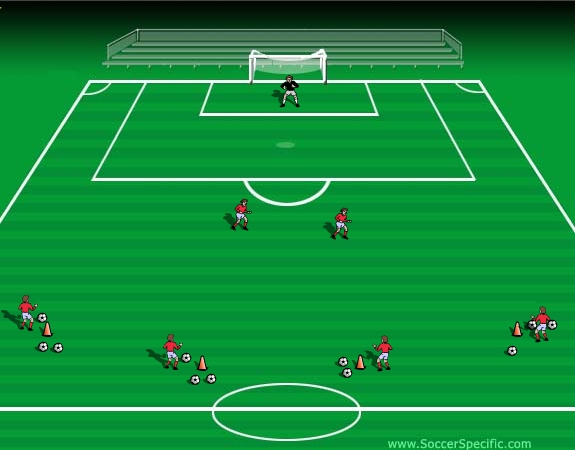
Explanation:
Twin Strikers are not being marked and can therefore work unopposed. The strikers must receive service form the central and wide players and attempt to create goal-scoring opportunities. Play/movement must be realistic – no long dribbling / passing sequences. Alternate the service from the middle and wide areas.
General Guidelines:
Encourage service from central players at angles – see Diagram (b) below.
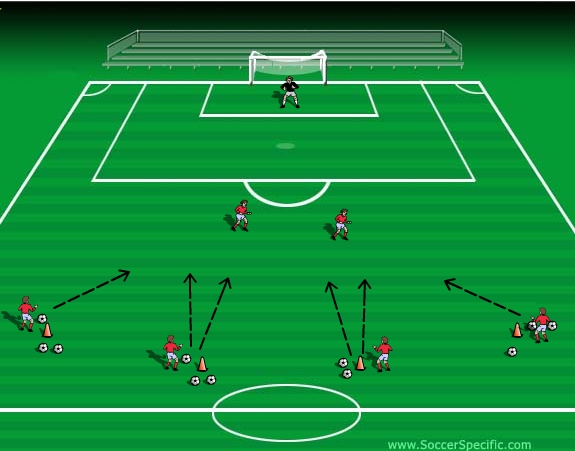
General Role of the Forwards:
- High & blind side starting position
- Onside Runs
- 2nd Forward (Weakside):
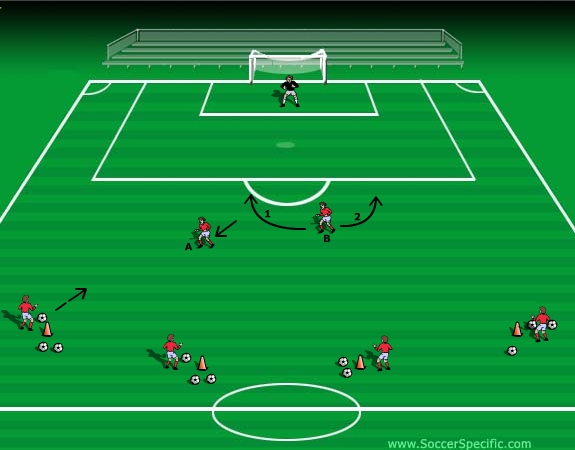
- Outside-in runs to split the central seam – see run #1 in Diagram (c) above
- Inside-out runs to split the vision of the central back – see run #2 in Diagram (c) above.
NOTE: The defenders in Diagram (d) below have been added for illustration purposes only to highlight the runs mentioned above. Defenders were NOT added to the training session at this stage. You can see the inside-out run splittng the central defenders (#1) as well as the inside-out run (#2) where the striker pulls away from the central defender.
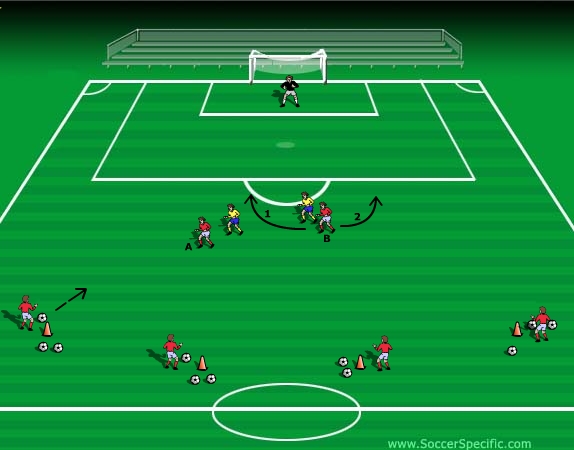
1st Forward (Strongside):
Pins Defender
Coaching Points:
- Creating space with 2 runs – work together to create opportunities.
- Down time for the forwards
- Timing of forward runs based on visual cues
- Can the forward’s 1st touch set up shot on the 2nd touch
- Body shape should be sideways-on
- Reading early options based on service
Activity #2: Match Condition
Set Up:
6 v 6+1 to 2 Goals as shown below. The neutral player (green) plays for the team in possession of the ball.
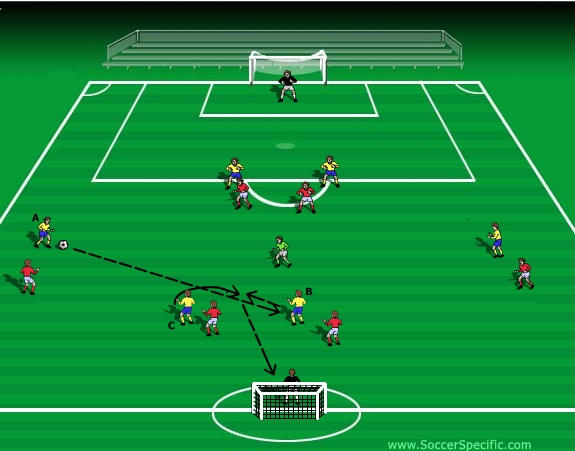
Explanation:
Both teams compete for possession of the ball and attempt to score in their opponents goal. Emphasis is placed on the movement / co-ordination of the twin-strikers. The neutral player is unopposed to encourage positive attacking play. Central defenders are instructed to play at 50% effort to start. Wide players do not defend against each other.
In Diagram (e) above the wide player (A) has played into the 2nd Striker´s feet. The 1st Striker has spun “underneath” to get the layoff and attempt a shot on goal.
Coaching Points:
- Forwards starting position
- Down time movement
- Recognition of visual cues
- Early recognition of options based on service and pressure
- Passes and movements at angles
Progression:
Set Up:
7 v 7 +1 to 2 Goals as shown below. The neutral player (green) creates a 2v1 situation in the central midfield area.
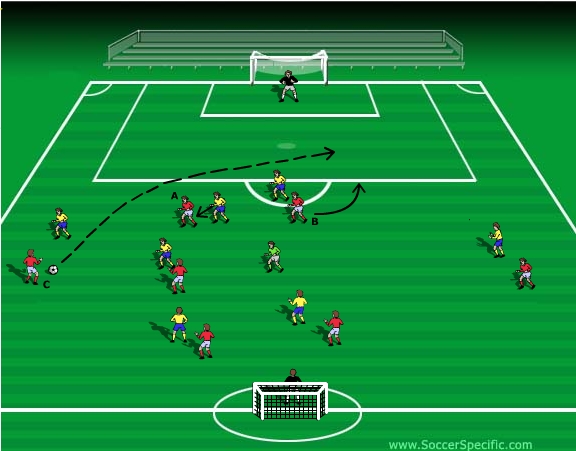
Explanation:
No restrictions – defenders and wide players are instructed to play at 100% game speed. Emphasis is continually placed on the movement / co-odination of the Twin Strikers.
In Diagram (f) above the 1st Striker (A) has checked to the ball – his marker has followed. The other central defender must slide a little to fill the gap vacated by his defensive partner – this gives the 2nd striker (B) an opportunity to “pull away” into the space to receive a ball over-the-top from wide player (C).
Coaching Points:
- Forwards starting position
- Down time movement
- Recognition of visual cues
- Early recognition of options based on service and pressure
- Passes and movements at angles
- Forwards must look to layoff to midfield support players if available.
